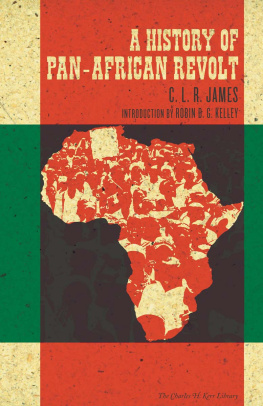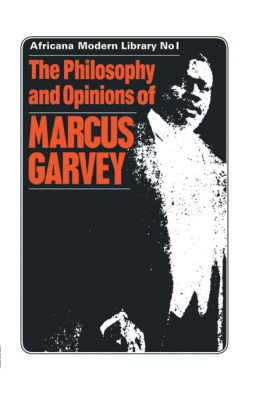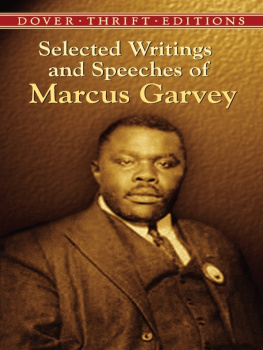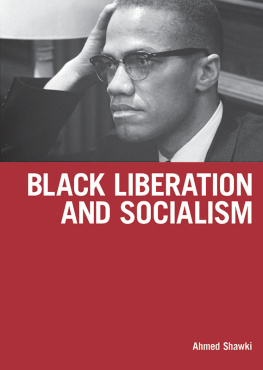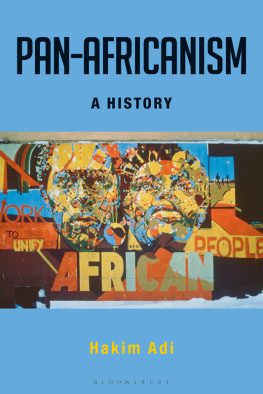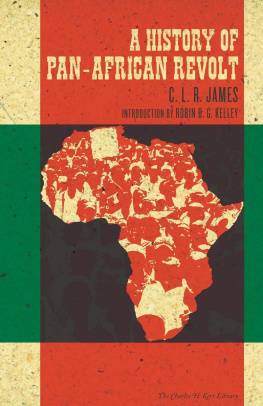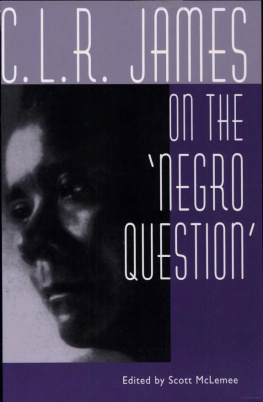
A History of Pan-African Revolt
C.L.R. James
This edition 2012 PM Press
ISBN: 978-1-60486-095-5
LCCN: 2011939689
Cover and interior design: Antumbra Design/Antumbradesign.org
10 9 8 7 6 5 4 3 2 1
PM Press
PO Box 23912
Oakland, CA 94623
www.pmpress.org
Published in conjunction with the Charles H. Kerr Publishing Company
C.H. Kerr Company
1726 Jarvis Avenue
Chicago, IL 60626
www.charleshkerr.com
Printed in the USA on recycled paper by the Employee Owners of ThomsonShore in Dexter, Michigan. www.thomsonshore.com
Published in the EU by the Merlin Press Ltd.
6 Crane Street Chambers, Crane Street, Pontypool, NP4 6ND, Wales
www.merlinpress.co.uk
ISBN: 978-0-850366-600
Contents
Publishers Foreword
(1995)
It is a real honor and pleasure for the Charles H. Kerr Publishing Company to bring out a new edition of this classic work by the great revolutionary historian, theorist and activist C.L.R. James. Originally issued in England in 1938, and expanded in 1969, the book has heretofore circulated almost in underground fashion. Hopefully this new Charles H. Kerr edition will help bring it the wider attention it very much deserves.
When Comrade James gave us permission to reissue two of his out-of-print works, it was his intention to write a new foreword for each. To the reissue of State Capitalism and World Revolution he contributed a foreword titled Fully and Absolutely Assured, which, despite its brevity, is an important amplification of his views. We sharply regret that our own financially driven delays in publication and C.L.R.s 1989 death cause this edition to appear without such a foreword.
Fortunately, however, this new edition features a valuable introduction by Robin D.G. Kelley, Professor of History and Africana Studies at New York University. Author of Hammer and Hoe: Alabama Communists in the Great Depression (University of North Carolina Press, 1990) and Race Rebels: Culture, Politics, and the Black Working Class (Free Press, 1994), and co-author (with Sidney Lemelle) of Imagining Home: Class, Culture, and Nationalism in the African Diaspora (Verso, 1995), Kelley is a rare modern scholar whose breadth, clarity, and vision call James to mind.
In his introduction Kelley discusses the books previous publishers: the Independent Labour Party journal FACT, the shortlived Drum and Spear Press of Washington, D.C., and the Race Today collective in London. This seems to be an appropriate place to acquaint readers with the publishers of the current edition.
Founded in Chicago in 1886, a few weeks prior to the police riot at Haymarket Square, the Charles H. Kerr Company in less than a decade developed into the principal publisher of radical books and pamphlets in the United States. By 1900, the Kerr Company had rallied to the banner of international working class socialism. Through the first quarter of the twentieth century, that struggling socialist publishing house in Chicago, as Jack London called it in The Iron Heel, was the largest publisher of revolutionary literature in the English-speaking world.
Publication of the revolutionary classics was an early Kerr Company priority, and it has remained so ever since. In the years 19061909 Kerr brought out, for the first time in English, the three volumes of Karl Marxs Capital, and also published many other works by Marx and his co-thinker, Friedrich Engels. The Kerr Companys standard edition of the Communist Manifesto has been continuously in print, through countless editions, since 1902. Antonio Labriola, Paul Lafargue, Eugene V. Debs, James Connolly, Peter Kropotkin, Edward Bellamy, William Morris, Mother Jones, William D. Haywood, Sen Katayama, Louis B. Boudin, Mary E. Marcy, and Austin Lewis are only a few of the many important revolutionary writers whose works were made available by Charles H. Kerr.
The Great Depression and the Cold War were an exceptionally difficult period for Americas pioneer working class publishing house, but somehow the fellow workers who kept it going managed to keep a good number of the socialist classics in print. When Fred Thompson and others helped get the cooperative back on its feet in the early 1970s, the Board of Directors resolved to do their best to reissue the out-of-print classics and, insofar as limited finances allow, to add new ones to the list.
A Note on the Text
Apart from Americanizing the spelling (labor instead of labour, maneuver rather than manoeuvre, today without a hyphen, etc.), and making a few minor corrections, the text of this edition follows that of its predecessors. Only twice have we dared to change a word. Writing for readers in the British Isles, James once (on of this edition) refers in passing to Americas Parliament; to avoid confusion, we have substituted Congress.
The second change appears in the Epilogue. Jamess Epilogue was dictated, not written, and in the course of transcription part of a sentence was omitted in the Drum and Spear Press edition, and was not corrected in the Race Today edition. Since no manuscript of this text exists, and the present location of the tape-recording of it is unknown, we have taken the liberty of attempting to fill in the missing words to make the sentence comprehensible.
Introduction
Should world events give these people a chance, they will destroy what has them by the throat as surely as the San Domingo blacks destroyed the French plantocracy.C.L.R. James
I
We are all indebted to the Charles H. Kerr Publishing Company for re-issuing C.L.R. Jamess important but little-known book, A History of Pan-African Revolt. Originally published in 1938 under the title A History of Negro Revolt, this brief but highly suggestive global history of black
Ahead of its time, indeed. Five years before the publication of Herbert Apthekers American Negro Slave Revolts and just three years after the appearance of W.E.B. DuBoiss Black Reconstruction in America (another book way, way ahead of its time), A History of Negro Revolt excoriated imperialism and placed black laborers at the center of world events when the leading historians of his day believed Africans were savages, colonialism was a civilizing mission, and slavery was a somewhat benevolent institution. James knew he was challenging established fictions. The only place where Negroes did not revolt, he wrote in 1939, is in the pages of capitalist historians.slaves or market-driven peasants, James casts his net widely and includes slave revolts, strikes, millenarian movements, and a vast array of anti-racist protests.
As a study of Negro rebellions, A History of Negro Revolt completely revised African and diasporic history by focusing on the masses. Of course, there are leaders, but like Toussaint LOuverture in San Domingo, leaders are made by the masses and the times in which they live. James makes a point of describing how the masses defend their leaders by freeing them from jail cells, hiding them in huts and cellars, pummeling their detractors into silence. It is the masses, and only the masses, that can make the Utopian speeches of a Simon Kimbangu, a John Chilembwe, a Marcus Garvey, or a Kwame Nkrumah a reality.
A History of Negro Revolt, however, was not simply an outgrowth of Jamess vision and brilliance. It was a collective endeavor, a product of specific political campaigns, debates and intellectual exchange with some of the leading black radical thinkers of the twentieth century. It is not just another history book; it is a historical document in its own right, a testament to the streams of radical thought that converged in Londons cafes, libraries, and underheated flats where young Africans and West Indians gathered during the 1930sthe decade when fascism and a depressed economy threw into question the fate of humanity.
Next page
